Seven things I learned during 1,000 hours of riding on Zwift
Can you have fun riding a bike that doesn’t go anywhere?
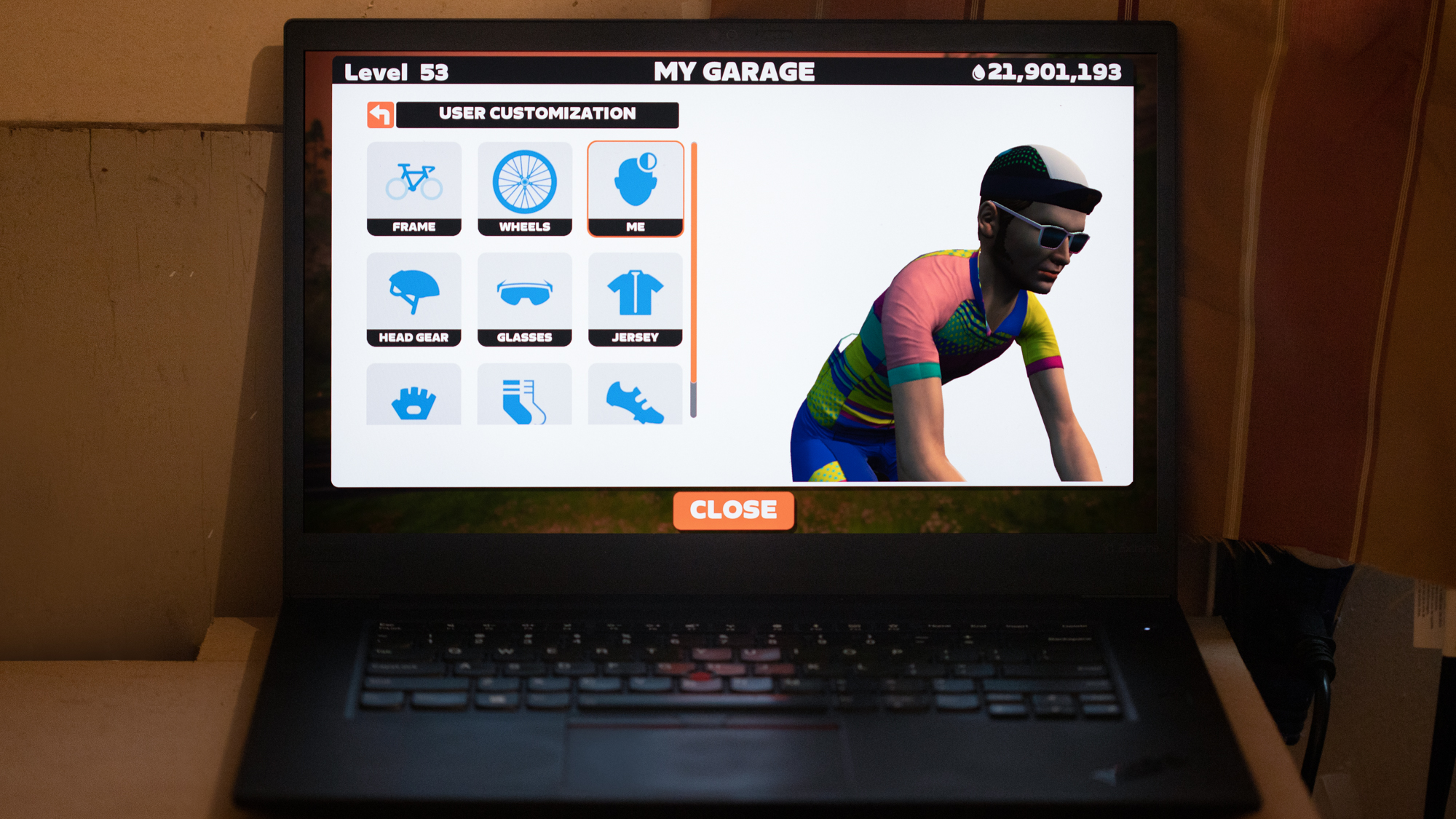
If you're in the Northern Hemisphere, the winter weather is starting to close in. Technically it's still fall but I assure you that, at least in the American Pacific Northwest, we've long since left behind any romantic notions of fall weather. As I sit and write this, I can see it raining hard out the window and I know that when I'm ready for today's ride, it will be indoors. I'll be testing a new potential addition to our list of the best smart trainers available and this will be far from the first time.
I looked and I've spent over 1,000 hours on Zwift over the years. Truthfully the winter has little to do with how much indoor riding I do. Sometimes I ride indoors to free myself of time constraints related to shorter days or to get a better bang for my buck if I'm pushed for time. Other times, I choose to ride inside so I can be home and still get my ride in. I also do structured training exclusively inside and intervals generally have little to do with the weather. Whatever my reasons, or yours, after all this time, I feel like I've collected some wisdom.
I don't view indoor riding, be that Zwift or another system, as a drag. Quite the contrary, I love indoor riding almost as much as outdoor riding. The two are different but they each have their place in the larger ecosystem of modern cycling. If you think you dread indoor riding, keep reading to see some of the things that have helped me enjoy my time spent riding my bike without moving.
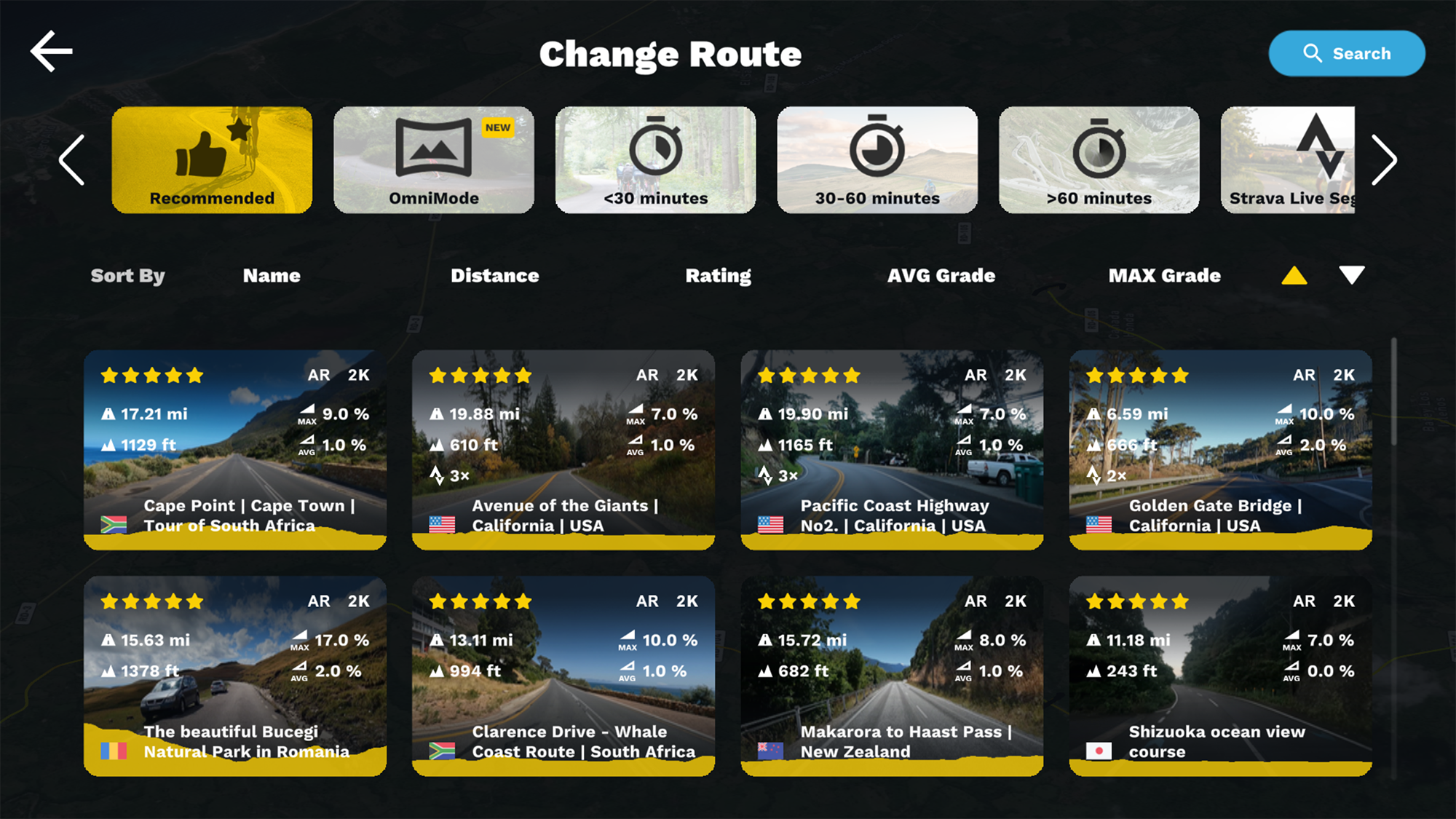
1. A challenge makes things fun
When it comes to indoor cycling, having a goal to complete is the number one thing that will keep it engaging. If you head outside on a beautiful day, it's entirely possible you can enjoy yourself because of the experience. It doesn't require more than being outside on your bike on a sunny day. Riding indoors won't give that same implicit pleasure. You are inside, not going anywhere, and for most of us, our indoor bike isn't even in our favourite part of the house.
When I discuss indoor riding with people who haven't had a great experience, it's usually this part of the experience they've neglected. Zwift in particular is an open world that lets you do your own thing. It's part of the strength of the platform but it can turn people off in the beginning. Being a virtual world, there's very little sense of discovery. With the right setup, there are definitely beautiful things to see but you aren't going to get to the top of an hour's climb and find yourself rewarded with a coffee while you take in the view.
Often, the response to this fact is a focus on distance or time. Something like, "I am going to ride for 32km/20 miles/1 hour then I can get off the bike" is an absolute guarantee of misery. You'll spend most of the session counting down the time/distance and it will get increasingly difficult to rationalise bothering with it. If your goal is a ride of 60 minutes, does it matter if you stop at 55 minutes?
If you want to put in long hours riding indoors then find a goal that's more engaging. If you are new to Zwift then completing the routes and getting the badges is one of the best ways to pass the time. Zwift also knows this and this season it has been inventing new reasons to cover the same virtual roads again. That's inherently the point of events like the new monthly series of features that reward the completion of a variety of routes.
Get The Leadout Newsletter
The latest race content, interviews, features, reviews and expert buying guides, direct to your inbox!
There are also other options besides Zwift. The RGT side of the Wahoo X subscription offers a few real-world routes as well as the ability to turn GPX files shorter than 100km into rideable routes. If you'd prefer a video-based system with even more real-world locations, Rouvy has you covered as well. I've even used a Garmin head unit to ride a route months before I raced the course in real life. Whatever works for you, if you want to do more than pass the time riding indoors, a route as a goal is a great way to do it.
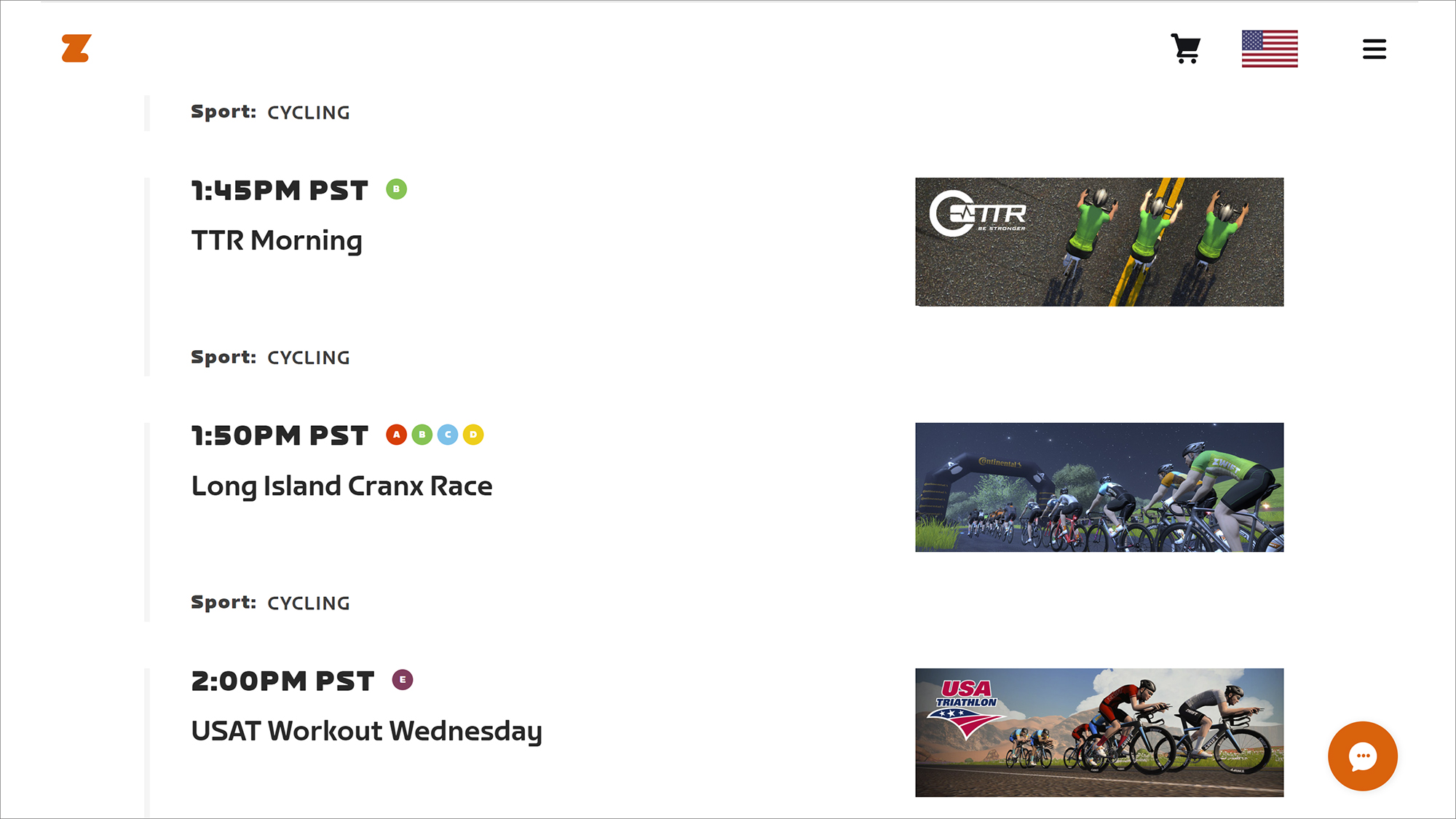
2. It's the community that matters
The draw that never gets old is the community. As much as I’d like to tailor this article to cover more than just Zwift, there’s no way to get around the community aspect that Zwift has. At any time of the day, there are opportunities to do workouts in a group or just ride in a group. Zwift still has a lot of work to do to make communication better but you can grab your phone and chat with the people you are riding with. Just like outside, people have regular group rides and get to know each other.
Often, with lower-intensity events, there's a never-ending stream of chat happening on the side of the screen. You can participate but you can also just watch it happen. Even if you don't pay much attention to the chat though, there's an organic and engaging nature to riding on the wheel of real people. It's an excellent way to get you through your daily workout when you don't have a new challenge to take on.
There is one more aspect of the community on Zwift though. There is often nothing more engaging than competition, and the Zwift community offers as much racing as you can handle. If you race in the same event week after week, you will start to recognize names. As in real life, it's pretty amazing to push yourself against the person who dropped you last week. You can even join a team and work together. One of the most fun things I've ever done on a bike is to compete in a team time trial with everyone talking via headphones in my ear. Racing makes riding indoors genuinely fun.
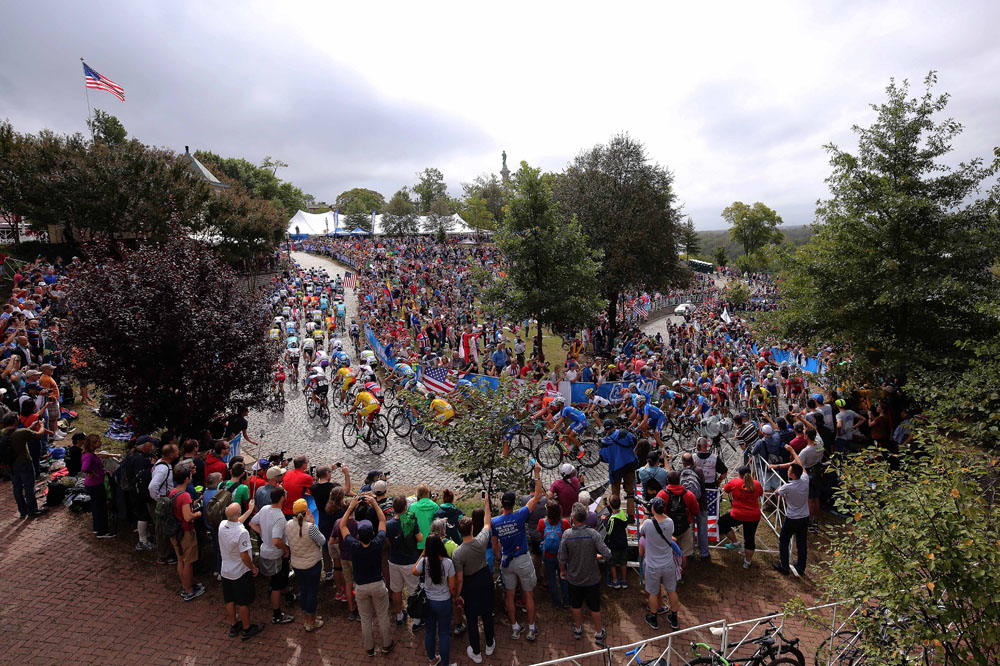
3. A breakaway is incredibly hard
Many of you who are reading this will also have a deep love for professional cycling. You might have spent years watching the greatest names in cycling execute plans in countless races but have you ever tried to do it yourself? Indoor racing is your chance to give it a try. If you’ve ever wondered why someone didn’t push just a little harder, it will make sense pretty fast.
My favourite example of this is the 2015 UCI Road World Championships. Peter Sagan won that race after attacking on a 19% climb and holding off the rest of the field for 3km. It was a spectacular win that was well understood to be impressive. If you want to understand just how impressive it is, enter a race on that course in Zwift. Go ahead and see if you can break free from the pack then hold your lead until the finish.
Another fun example is available on Wahoo Systm. Instead of trying to replicate something in your own way, you can ride the exact same power profile, scaled to your ability, as a professional rider. In one example, on-screen you will see race footage and it's matched to the power profile of Lotto-Soudal rider Carl Friedrik Hagen in Stage 6 of the 2019 edition of the Tour of Norway. The workout is 90 minutes long, and while you won't have a day of racing your legs, you can get a sense of the ups and downs in power and what it feels like.
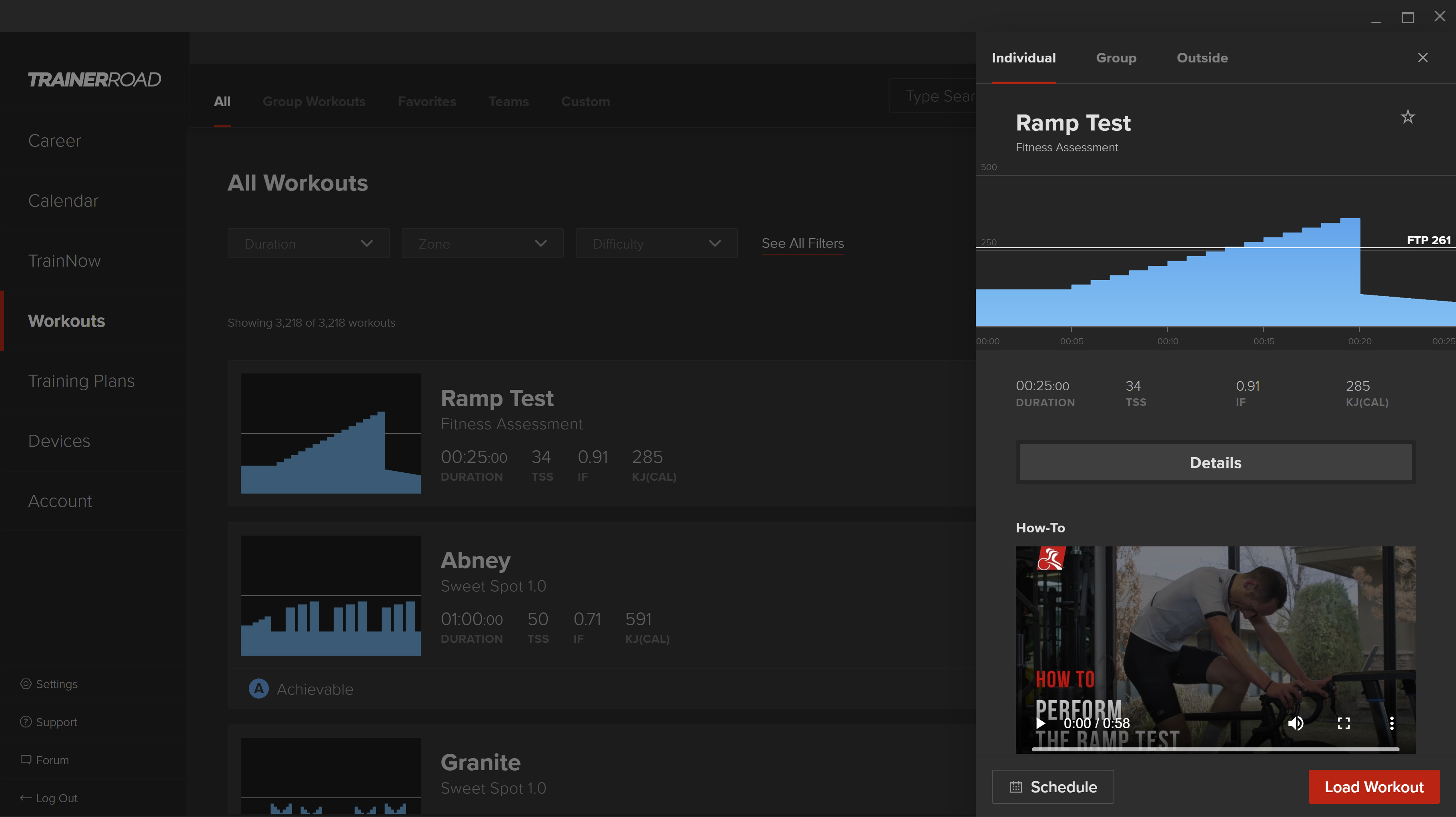
4. FTP tests scare people
If you want to race on Zwift, the first thing you'll need to do is an FTP test. Most races use categories that correspond with power-to-weight ratios. You need to understand how much power you can put out so that you can enter the correct race category. If that sounds scary, you aren't alone.
I've lost count of how many people I've talked to who seemed excited about racing only to never do it because of this requirement. What's important to know about this is that whatever you may have heard about FTP testing, it's changed. At one time you'd need to give it everything you had for 20 minutes. It took skill to pace correctly and it was incredibly hard. It's also a thing of the past.
Zwift, Wahoo Systm, and TrainerRoad all have a ramp-style FTP test. Instead of a 20-minute all-out effort, it will start easy and increase in difficulty until you can no longer turn the pedals. Once that happens, that's the end of the test. The tough part is around five minutes long and the really tough part is only a minute or two. It won't be as accurate as the 20-minute test for every athlete but for me, it's never been more than three watts different. If you’ve considered racing but are scared off by this requirement, I encourage you to jump in.
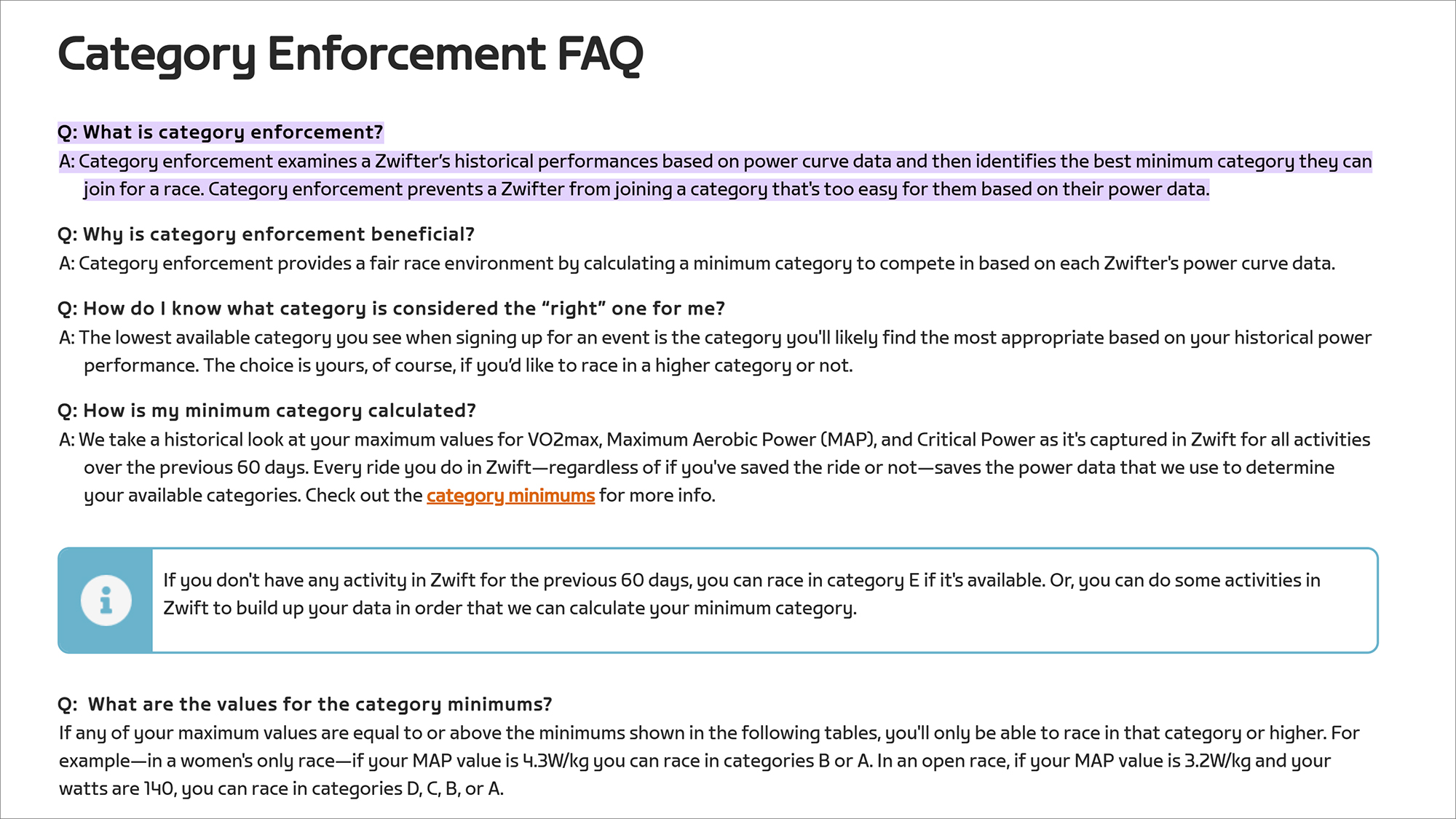
5. Weight doping isn't an issue
One of the things that people often discuss as a fairness issue in e-racing is weight doping. This is riders reporting their weight incorrectly and skewing the power-to-weight ratio in their favour. I obviously can't claim this is completely a non-issue but I've interacted with a lot of people who race on Zwift and it's never come up. It would also be easy for Zwift to catch, even at a low level, and as the races get more consequential, Zwift requires a weigh-in.
The fact that weight doping isn't an issue doesn't mean there are no issues though. Zwift does have an issue with categories in general and it's something it has been addressing. People often race down a category for an easier race and to combat the issue, more and more races are category enforced. You can race up a category but not down. We will have to wait and see if this fixes the issue but it’s not being ignored. Overall, my experience of racing in Zwift is that when my legs are strong it feels fair. As far as I can tell, the vast majority of people are having fun and racing fairly.

6. It's easy to overdo it
I've got a few sections about racing in here because it's incredibly fun. It's also a great way to get faster and build fitness. It's so good that it's easy to overdo it. It can be very difficult to get on Zwift and choose not to race but for the sake of your health, sanity, and fitness you'll need to moderate.
Zwift racing is high-intensity training. Your body can only handle that intensity once, maybe twice, a week. That doesn't mean you can't race more than that but it does mean that you are more likely to injure yourself. Even if you don't injure yourself, and this one comes from experience, you will make yourself slower. Give your body time to recover.
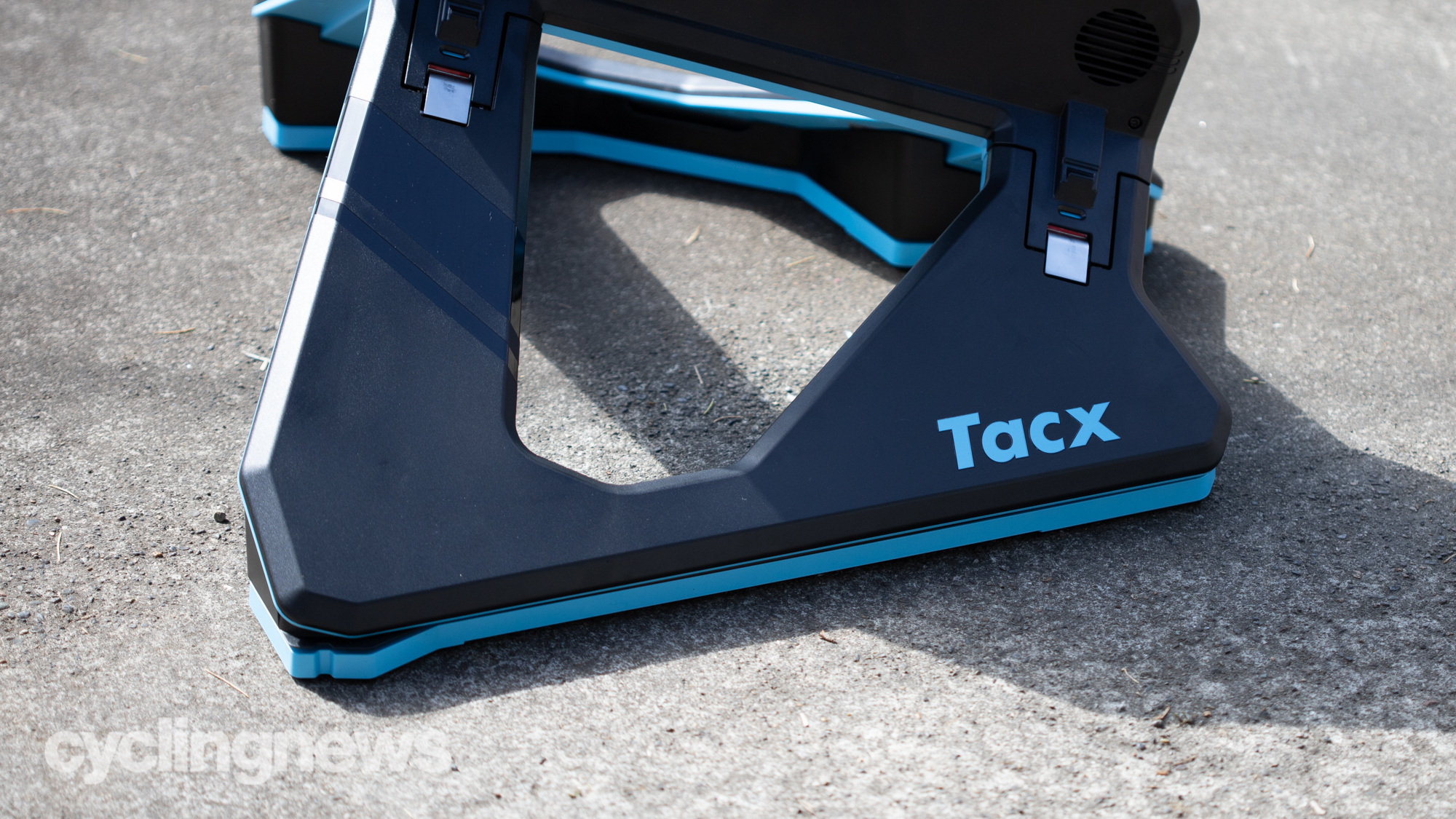
7. Indoor specific gear is worth investing in
This might sound like a sales pitch but like any specific cycling category, there are ways to optimise for indoor cycling. I could gleefully dive into every little detail about a wide variety of products but instead, take a look at our comprehensive guide on indoor cycling for specifics. My point is more about the times I've talked to people who don't believe there's value in any of the indoor-specific products. I've spent a lot of time riding indoors and sometimes the specific gear is great. You don't need to buy every little thing but often a few specific purchases make the whole experience a bit more pleasant.
Josh hails from the Pacific Northwest of the United States but would prefer riding through the desert than the rain. He will happily talk for hours about the minutiae of cycling tech but also has an understanding that most people just want things to work. He is a road cyclist at heart and doesn't care much if those roads are paved, dirt, or digital. Although he rarely races, if you ask him to ride from sunrise to sunset the answer will be yes. Height: 5'9" Weight: 140 lb. Rides: Salsa Warbird, Cannondale CAAD9, Enve Melee, Look 795 Blade RS, Priority Continuum Onyx
